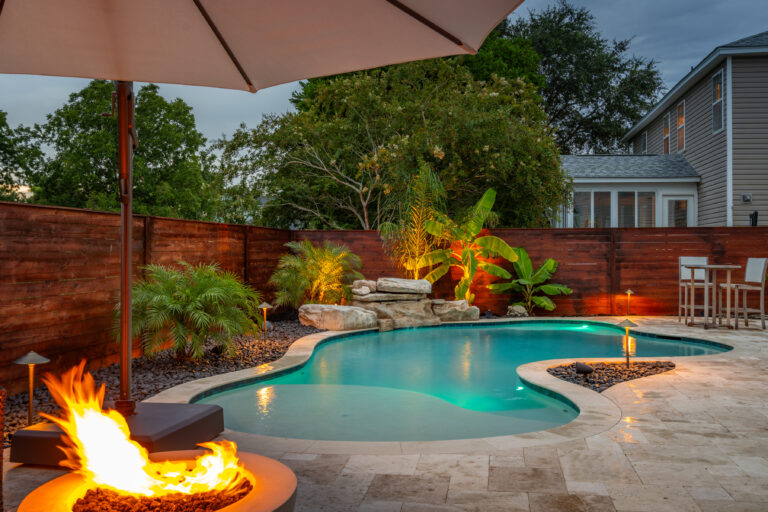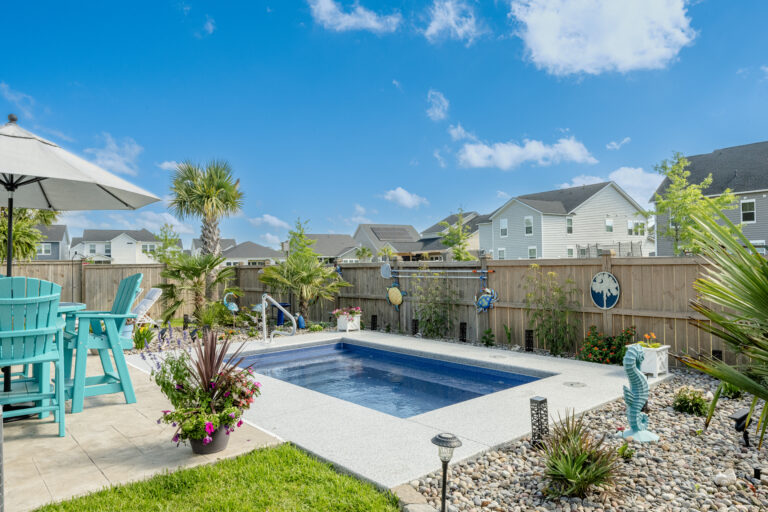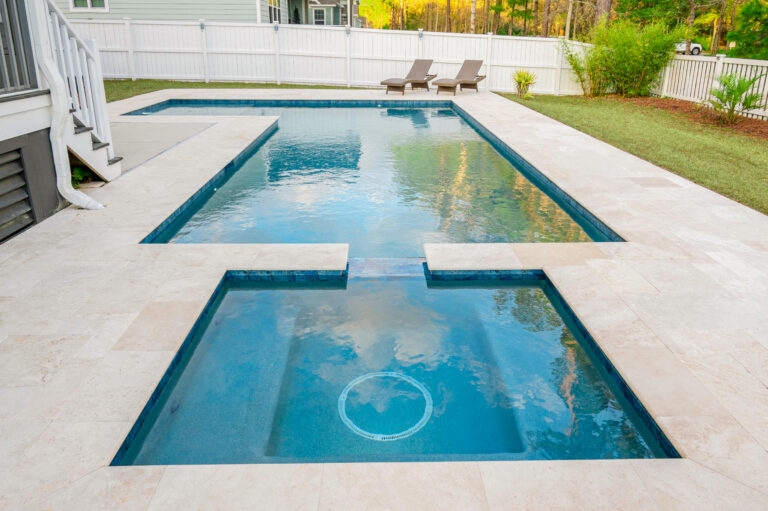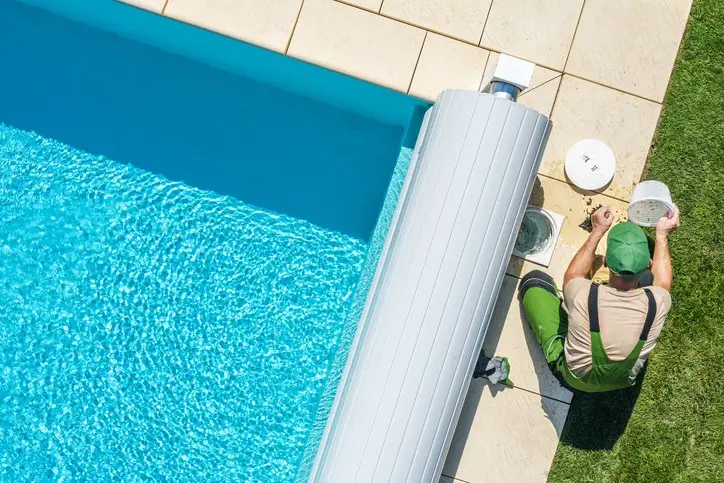Maintaining the pristine condition of your swimming pool isn’t just about aesthetics.
It’s about protecting your investment.
At Heritage Pools, Charleston’s elite pool builder, we know that over time, even the most well-maintained vinyl pool liners will need replacing. Whether your liner has faded from the South Carolina sun, developed a leak or simply aged out, understanding the cost of replacement is essential to managing your pool maintenance budget.
In this comprehensive guide, we’ll break down every aspect of pool liner replacement cost, what influences it and how to save money in 2025 – without sacrificing quality.
Understanding Vinyl Pool Liners
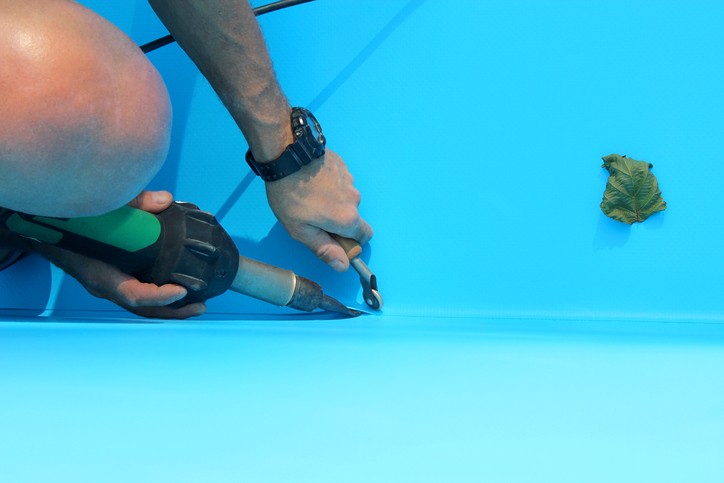
Vinyl pool liners are a popular choice for in-ground pools, due to their durability, affordability and smooth surface. They come in a variety of colors, patterns and thicknesses, allowing homeowners to customize the look of their pool.
Vinyl liners are designed to resist fading from UV exposure and damage from pool chemicals, providing years of reliable performance when properly maintained. Easy to install and replace, they offer a cost-effective solution compared to other pool surfaces like concrete or fiberglass.
With proper care, a high-quality vinyl liner can last anywhere from 7 to 15 years.
To summarize, vinyl liners are the most commonly used in in-ground pools.
They’re flexible, cost-effective and available in a variety of colors and patterns to match your pool’s aesthetic.
Top Signs It’s Time to Replace Your Pool Liner
Not sure if your liner needs replacing? Watch for these clear indicators!
- Cracks, Tears or Leaks Small cracks in your liner can lead to water leaks, increasing your monthly water bill and potentially damaging the pool’s plumbing and foundation.
- Fading or Discoloration Sun exposure and chemicals can degrade the color and elasticity of vinyl over time. A faded liner not only looks dull, but also loses structural integrity.
- Wrinkles or Stretching As liners age, they often lose their shape, leading to wrinkles along the floor and walls of your pool. This can affect water flow and even trap dirt or debris.
- Frequent Water Loss Unexplained water loss often points to a hidden leak. A thorough leak detection inspection can reveal whether the liner is the culprit.
Factors Influencing Pool Liner Replacement Costs

Pool liner replacement isn’t one-size-fits-all. Several variables impact the final price, such as:
1. Size and Shape of the Pool
Naturally, larger pools require more material and labor. Unusual shapes or custom designs require additional measurement precision and custom-fit liners, both of which add to the price.
2. Liner Thickness and Material
Thicker liners (typically 28-30 gauge) offer better durability and longer lifespan, but come with a higher upfront expense. Thinner liners (20 gauge) are less expensive, but more prone to leaks and tears.
3. Installation Labor Costs
At Heritage Pools, we ensure our expert technicians perform high-quality, efficient work – offering excellent value for your investment.
4. Time of Year
Spring and early summer are peak seasons. Scheduling liner replacement in fall or winter may offer faster service.
Cost-Saving Strategies for Pool Liner Replacement
You don’t have to break the bank to replace your liner. Here’s how Charleston homeowners can save money with smart decisions.
- Routine Maintenance – Keep your liner clean and your chemicals balanced to extend its lifespan and delay replacement needs.
- Off-Season Scheduling – Plan replacements during winter or early spring when demand is lower and service availability is higher.
- Compare Contractor Quotes – While it’s tempting to go with the lowest bid, always ensure your contractor is licensed and experienced. Especially for complex shapes or pool renovations.
- Check Your Warranty – If your current liner is under warranty, you might qualify for a discount or partial replacement at no charge.
The Replacement Process: What to Expect
Understanding what’s involved in replacing your pool liner helps set realistic expectations.
1. Inspection & Measurements
We begin with a thorough inspection to assess the condition of the walls, floor, plumbing and pump. We then take precise measurements to ensure your new liner is a perfect fit.
2. Draining & Removal
Your pool is completely drained, and the existing liner is carefully removed. This step often reveals hidden leaks, mildew or underlying surface issues that need attention.
3. Surface Prep
The floor is leveled, cleaned and patched as necessary. If your pool has concrete walls, we also check for cracks or wear that may require repairs.
4. Installing the New Liner
The new liner is carefully fitted, attached using a bead or overlap system, and smoothed to avoid air pockets or wrinkles. Then, we begin filling the pool with water to ensure the liner settles correctly.
Maintenance Tips to Prolong Pool Liner Lifespan

Ensuring the longevity of your pool liner not only enhances the aesthetic appeal of your swimming pool, but also safeguards your investment. Proper maintenance can significantly extend the life of your liner, delaying the need for costly replacements.
Balance Water Chemistry
Maintaining the correct water chemistry is paramount in preserving your pool liner’s integrity. Imbalanced water can lead to liner deterioration, causing it to become brittle or discolored.
- Regular Testing: Test your pool water at least once a week to monitor pH, chlorine levels, alkalinity, and calcium hardness.
- Ideal Ranges:
- pH Levels: Keep between 7.2 and 7.6 to prevent scaling or liner damage.
- Chlorine Levels: Maintain between 1-3 ppm to avoid bleaching the liner or promoting algae growth.
- Total Alkalinity: Aim for 80-120 ppm to stabilize pH levels.
- Calcium Hardness: Keep between 200-400 ppm to prevent the liner from losing elasticity.
Regularly balancing these chemical levels prevents the liner from becoming brittle and helps avoid unsightly stains or scaling
Use a Pool Cover

A pool cover serves as a protective barrier against various environmental factors that can degrade your liner over time.
- UV Protection: Continuous exposure to sunlight can cause the liner to fade and weaken. A cover blocks harmful UV rays, preserving the liner’s color and strength.
- Debris Prevention: Covers keep leaves, twigs and other debris out, reducing the risk of punctures and making overall maintenance easier.
- Temperature Regulation: They help maintain consistent water temperature, reducing the strain on the liner caused by expansion and contraction.
Investing in a quality pool cover can significantly extend the lifespan of your liner by shielding it from these potential hazards.
Avoid Sharp Objects
Physical damage is a common cause of liner deterioration. Taking precautions can prevent accidental punctures or tears.
- Inspect Pool Toys and Equipment: Ensure that all items used in the pool are free from sharp edges or rough surfaces that could harm the liner.
- Mindful Landscaping: Trim overhanging branches and remove any nearby plants with thorns or sharp leaves to prevent them from falling into the pool.
- Pet Precautions: While it might be tempting to let pets swim, their claws can easily damage the liner. It’s advisable to keep animals out of the pool.
By being vigilant about what enters your pool, you can prevent many common causes of liner damage.
Schedule Annual Inspections
Regular professional assessments can catch potential issues before they escalate, saving you time and money in the long run.
- Early Leak Detection: Professionals can identify and address minor leaks that might not be immediately noticeable, but can lead to significant problems if left unattended.
- Structural Assessments: They can evaluate the pool’s overall structure, ensuring that the liner remains properly fitted and that there are no underlying issues.
- Maintenance Recommendations: Based on their findings, experts can provide tailored advice on care routines or necessary repairs.
Engaging with a trusted pool maintenance service for annual check-ups ensures that your liner remains in optimal condition.
When to Hire a Professional vs. DIY

Deciding between undertaking pool liner maintenance or replacement yourself and hiring a professional depends on various factors, including the complexity of the task and your level of expertise.
When to DIY
Wondering when to DIY for your pool liner care? Here’s a helpful breakdown!
- Minor Repairs: Small punctures or tears can often be patched using a vinyl repair kit. Ensure the area is clean and dry before applying the patch.
- Regular Cleaning: Routine tasks like skimming debris, brushing the liner gently and vacuuming can be handled without professional assistance.
- Chemical Balancing: With the right testing kits and chemicals, maintaining water chemistry is a feasible DIY task.
However, it’s essential to educate yourself thoroughly and follow manufacturer guidelines to avoid inadvertently causing damage.
When to Call a Professional
Certain situations warrant the expertise of trained professionals to ensure the safety and longevity of your pool liner:
- Major Repairs or Replacements: Significant tears, extensive fading or a liner that’s reached the end of its lifespan require professional intervention. Improper installation or repair can lead to more severe issues down the line.
- Structural Concerns: If you notice bulging walls, significant water loss or other structural anomalies, it’s crucial to consult an expert.
- Time Constraints: Professional services can complete tasks more efficiently, saving you time and ensuring the job is done correctly.
Engaging professionals ensures that complex tasks are handled appropriately, reducing the risk of further complications.
By adhering to these maintenance tips and understanding when to seek professional assistance, you can significantly prolong the lifespan of your pool liner, ensuring many years of enjoyable and worry-free swimming experiences.
FAQs About Pool Liner Replacement
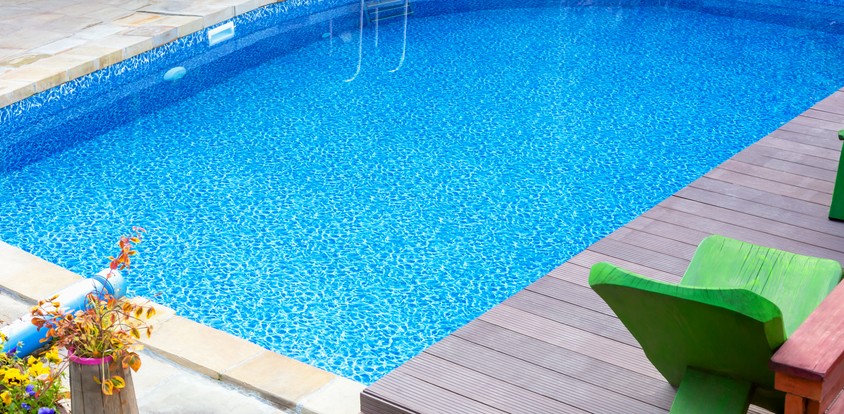
How long does a vinyl pool liner last?
Most vinyl liners last 7-10 years depending on material thickness, maintenance and exposure to sun or chemicals.
Can I replace my liner during the summer?
Yes, but you may face higher labor rates and longer wait times during peak season.
Is a thicker liner worth the cost?
Absolutely. A thicker liner resists punctures, wrinkles and sun damage, which can help to extend the lifespan and reduce long-term costs.
Will my liner replacement include leak detection?
While Heritage Pools does not do in-house leak detection, we do work with the best leak detection teams in our area. Should you have an unknown leak in your swimming pool, we can help you navigate the issue and get in touch with the best professionals locally.
The best time to address this concern is when performing a liner replacement if it is suspected that something other than the liner is causing water loss in the swimming pool. If leak detection is requested, this will be additional to the liner replacement cost.
Do you offer financing for liner replacements?
Yes! We offer flexible financing options so you can get the pool you love without compromising your budget.
Replace Your Pool Liner With Heritage Pools!
Replacing your pool liner is an essential part of maintaining your swimming pool and protecting your long-term investment.
Whether your goal is improved aesthetics, better waterproofing or resolving a persistent leak, knowing what to expect and how to save can make all the difference.
At Heritage Pools, we specialize in custom pool renovations and premium liner replacements for Charleston homeowners.
If you’re noticing signs of liner wear, or simply would like to upgrade the look of your pool, contact us today and experience the difference of working with Charleston’s elite pool builder!
